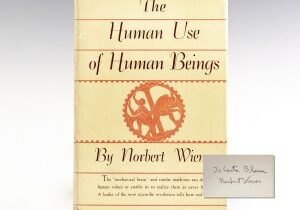Born on July 10, 1871 in the aftermath of the Franco-Prussian War, famed French novelist Marcel Proust was born into a France torn by internal conflict. Though Paris was gripped by political turmoil and France’s modernization put pressure on the class system, Proust and his educated aristocratic parents were largely unaffected. Marcel, however, was a sick child, grappling with illnesses that beset him from the age of nine until the end of his life in 1922.
Despite having his education disrupted due to his physical infirmity, young Marcel showed great interest and talent in literature. He continually read the works of prominent novelists such as John Ruskin and Ralph Waldo Emerson, even translating some of Ruskin’s novels into French. It was after several years of reading Thomas Carlyle, Ralph Waldo Emerson, and John Ruskin that Proust refined his theories of art and the role of the artist in society. Ruskin’s view of artistic production was central to Proust’s own theory which concluded that the artist’s responsibility was to confront the appearance of nature, deduce its essence and retell or explain that essence in the work of art.

First edition of Proust’s translation of Sesame and Lilies. Inscribed by Proust to Monsieur L. Belugou.
Ruskin’s work was so important to Proust that he claimed to know “by heart” several of Ruskin’s books, including The Seven Lamps of Architecture, The Bible of Amiens, and Praeterita. In the late 1800s, Proust set out to translate two of Ruskin’s works into French, but was hampered by an imperfect command of English. To compensate for this he made his translations a group affair: sketched out by his mother, the drafts were first revised by Proust, then by Marie Nordlinger, the English cousin of his friend and sometime lover Reynaldo Hahn, then finally polished by Proust. The Bible of Amiens, with Proust’s extended introduction, was published in French in 1904. Both the translation and the introduction were well-reviewed. At the time of this publication, Proust was already translating Ruskin’s Sesame and Lilies, which he completed in June 1905, just before his mother’s death, and published in 1906.
Proust’s involvement with the literary and artistic scene in Paris slowed after the turn of the 20th century. After his parents passed away and his brother married, Proust’s health worsened and he became increasingly reclusive. He began to devote all of his literary prowess toward his magnum opus, A La Recherche du Temps Perdu. He was best known for this 3200 page masterpiece, the longest novel in human history.
First translated into English by C.K. Scott Moncrieff as ‘Remembrance of Things Past‘, the work was later revised in translation to ‘In Search of Lost Time‘. Semi-autobiographical, and written in a stream-of-consciousness style, W. Somerset Maugham called it ‘the greatest fiction to date’. Gradually withdrawing from society, Proust worked during the nights and slept during the day, working out the seven volumes of this famous work. The first volume was published in 1913. Proust oversaw the publication of three more volumes, and left three more unpublished at the time of his death in November 1922. The publication of these remaining volumes was carried out by his brother, Robert Proust, and Jacques Rivière. In Search of Lost Time is considered, by many scholars and critics, to be the definitive modern novel.
Though originally overlooked and ignored, ‘Remembrance of Things Past‘ developed into a monumental accomplishment, posthumously granting him a preeminent status in 20th century literature. The novel encompassed Proust’s ‘thought life’, including subjects such as memory, psychology, art, and sexuality. Moreover, the work broke with standard novelistic conventions regarding a centralized plot and active protagonists. Instead, the story had an episodic structure, emphasizing the presence of multiple perspectives and introspective experiences simultaneously. Reflecting on Proust’s achievement, novelist Graham Greene named him, “the greatest novelist of the 20th century.”
View the complete list of the works of Marcel Proust currently in our collection here.











